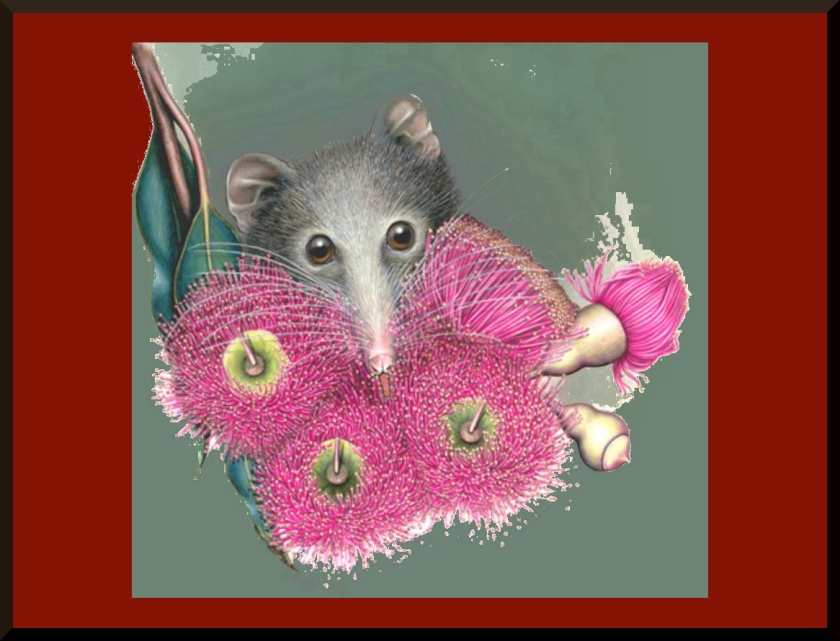Honey Possums can hang from their tails while sucking nectar and eating pollen, they are the hummingbirds of the pouched marsupial world.

Female honey possums are totally promiscuous, which helps a healthy genetic mix. The boys are much smaller than the females but boast the largest testes of any mammal on the planet, relative to their body size, of course.
It seems the female honeys prefer having sex with the male honeys who have the biggest hairy balls.
Using genetic markers, scientists have shown that the embryos in the one female have been fertilized by sperm from different males . In other words, the male that can produce the most spermatozoa that can move the fastest to reach the egg, succeeds in passing on his genes to the next generation of honey possums. Male honey possums seem very well equipped to do just that. Their spermatozoa are the largest of any known mammalian sperm !

The embryos of the honey possum are tiny when they are born, the size of a grain of rice. While they are in the pouch, the mother doesn’t stop having sex, but the new embryos are prevented from developing.
The mother has the ability to keep the embryos in suspension for longer periods and she can choose when to have them or not, when days shorten or maybe when food supply is better, in spring when more flowers bloom.
 The ‘right to choose’ of the mothers is considered a key to their survival for millions of years.
The ‘right to choose’ of the mothers is considered a key to their survival for millions of years.
Honey possums are a unique family of just one species, going all the way back to the separation of Sth America and Australia 40 million years ago. Though not in danger they have few babies, and are totally dependent on a year round supply of nectar and pollen. They only live in one small area and are threatened by, farming, habitat loss , pesticides, herbicides, climate change and increased bush fires, all caused by humans.
Honey Possums lived alongside the Aboriginal Noongyar people in the south-west of Western Australia. For thousands of years, they shared the sweet nectar produced from the ancient species of plants . The Noongyar call it ‘noolbenger’ and, today, it is the totem animal for some of the Noongyar people.
-
Related posts
-
Gay and lesbian albatrosses share ‘chick care’!
-
Kropotkin.. Updating Mutual Aid
-
Why dolphins refuse to fight back?
-
Possum infestation keeps Australian PM out of official residence… (telegraph.co.uk)
-
Thousands of backyard beekeepers get a buzz from honey hobby (miamiherald.com)
-
20 Amazing Honey Bee Facts! (refreshingnews99.blogspot.com)

